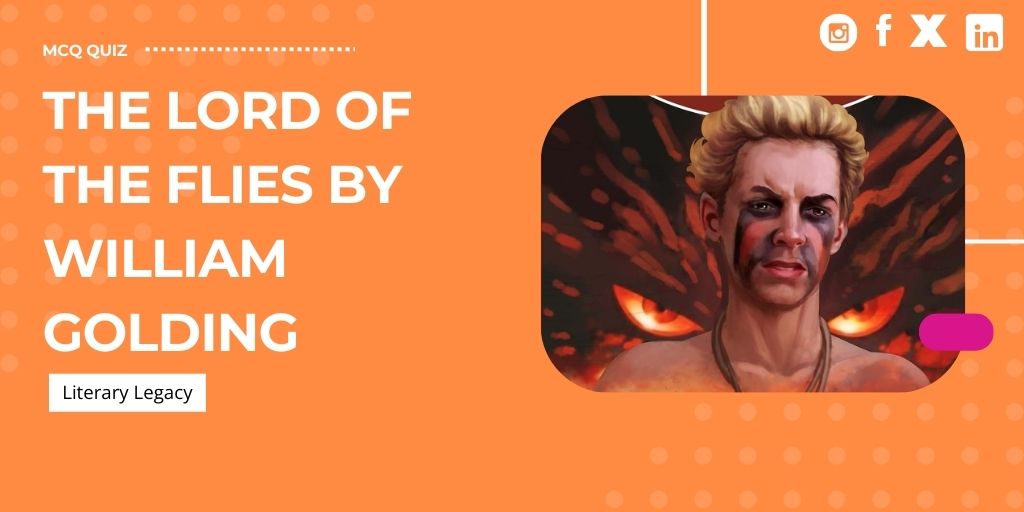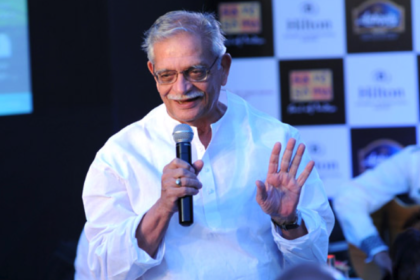1. What item do Ralph and Piggy discover that is used to summon the other boys?
Choices
A) A wooden flute
B) A trumpet
C) A bell
D) A conch shell
Answer: (D)
A conch shell
The conch shell is significant as a symbol of authority and order among the boys.
2. Who is chosen as the leader of the group?
Choices
A) Ralph
B) Piggy
C) Simon
D) Jack
Answer: (A)
Ralph
Ralph is elected as the leader by the other boys, which sets the stage for the group’s initial structure.
3. What does Ralph suggest they must do to signal for rescue?
Choices
A) Build shelters
B) Construct a raft
C) Create a smoke signal
D) Light a signal fire
Answer: (D)
Light a signal fire
Lighting a signal fire is crucial for attracting the attention of passing ships.
4. What ultimately happens to the signal fire due to the boys’ negligence?
Choices
A) It is extinguished by rain
B) It causes a forest to grow
C) It ignites the island
D) It burns out
Answer: (D)
It burns out
The signal fire goes out because the boys prioritize play over their responsibilities.
5. What emotion begins to take hold of the boys during the meetings?
Choices
A) Anger
B) Fear
C) Calmness
D) Joy
Answer: (B)
Fear
Fear grows among the boys, especially regarding the idea of a beast on the island.
6. Which character becomes increasingly obsessed with hunting?
Choices
A) Jack
B) Piggy
C) Ralph
D) Simon
Answer: (A)
Jack
Jack’s obsession with hunting symbolizes a shift in the group’s dynamic toward savagery.
7. What criticism does Piggy express towards Jack?
Choices
A) He does not hunt efficiently
B) He is reckless
C) He is not a good leader
D) He is not maintaining the signal fire
Answer: (D)
He is not maintaining the signal fire
Piggy’s criticism highlights Jack’s failure to uphold responsibilities critical for their survival.
8. What do the older boys try to convince the littluns about the supposed beast?
Choices
A) It swims in the ocean
B) It is hiding in the bushes
C) It comes out only at night
D) It is a figment of their imagination
Answer: (D)
It is a figment of their imagination
The older boys urge rational thinking to dispel the littluns’ fears about the beast.
9. What happens when Ralph blows the conch shell during the meeting?
Choices
A) Chaos erupts among the boys
B) Silence falls as they gather
C) The boys cheer wildly
D) It is ignored by the hunters
Answer: (B)
Silence falls as they gather
Blowing the conch shell is meant to restore order and signify authority during meetings.
10. What is the fate of one of the youngest boys during the fire incident?
Choices
A) He survives and escapes
B) He goes missing
C) He becomes a leader
D) He saves others
Answer: (B)
He goes missing
The youngest boy goes missing, presumably having burned to death in the uncontrollable fire.
11. What does the Lord of the Flies symbolize in the novel?
Choices
A) Friendship and unity
B) The innate goodness of humanity
C) Power and cruelty
D) Civility and order
Answer: (C)
Power and cruelty
The Lord of the Flies represents the primal instincts of power and cruelty that dominate Jack’s tribe.
12. Which character embodies the spirit of civilization as depicted in the novel?
Choices
A) Roger
B) Ralph
C) Jack
D) Simon
Answer: (B)
Ralph
Ralph represents order, leadership, and the instinct of civilization throughout the story.
13. What does the naval officer represent when he rescues the boys?
Choices
A) A return to morality amidst barbarity
B) The ultimate failure of civilization
C) The innocence lost by the boys
D) An unquestionable example of authority
Answer: (A)
A return to morality amidst barbarity
The naval officer symbolizes the abrupt return of civilization amidst the boys’ descent into savagery.
14. Which character is notably associated with the theme of loss of innocence?
Choices
A) Percival
B) Jack
C) Simon
D) Piggy
Answer: (A)
Percival
Percival, often reduced to tears, exemplifies the loss of innocence experienced by the boys on the island.
15. What is the primary conflict in Lord of the Flies?
Choices
A) Individualism versus collectivism
B) Humanity versus nature
C) Civilization versus savagery
D) Ralph versus Jack over leadership
Answer: (C)
Civilization versus savagery
The central conflict involves the struggle between the instincts of civilization and savagery within humans.
16. How does Golding depict the instinct of savagery compared to civilization?
Choices
A) As more primal and fundamental
B) As a necessary means of survival
C) As a learned behavior based on experience
D) As equally strong and relevant
Answer: (A)
As more primal and fundamental
Golding suggests that the instinct of savagery is more primal and fundamental to the human psyche than civilization.
17. What does the bloody sow’s head symbolize in the novel?
Choices
A) The bond between the boys
B) The joy of hunting
C) Innate human evil disrupting innocence
D) The innocence of childhood
Answer: (C)
Innate human evil disrupting innocence
The bloody sow’s head symbolizes innate human evil disrupting the children’s innocence.
18. What aspect of society do Ralph and Piggy prioritize?
Choices
A) Maintaining a signal fire and order
B) Hunting and games
C) Exploring the island
D) Building defenses
Answer: (A)
Maintaining a signal fire and order
Ralph and Piggy focus on establishing structure and maintaining the signal fire for rescue.
19. Which character shows the least inclination towards savagery?
Choices
A) Jack
B) Piggy
C) Ralph
D) Roger
Answer: (B)
Piggy
Piggy is depicted as having no savage feelings, representing reason and civility.
20. How does Jack’s character evolve throughout the story?
Choices
A) He finds a balance between fun and rules.
B) He remains committed to rescue and civility.
C) He grows obsessed with power and violence.
D) He becomes more empathetic and kind.
Answer: (C)
He grows obsessed with power and violence.
Jack evolves from initially adhering to rules to becoming obsessed with hunting and violence.
21. What do Sam and Eric mistakenly believe when they first see the parachutist?
Choices
A) It is a friend from their past.
B) It is the beast they have feared.
C) It is a warning of danger.
D) It is a sign of their rescue.
Answer: (B)
It is the beast they have feared.
Sam and Eric’s fear of the beast leads them to misinterpret the parachutist as a monster.
22. What is the outcome of Jack’s conflict with Ralph regarding leadership?
Choices
A) Ralph retains his position despite Jack’s challenges.
B) Jack is voted out by the other boys during the meeting.
C) Ralph is removed from power after a majority vote.
D) Jack convinces Ralph to step down peacefully.
Answer: (A)
Ralph retains his position despite Jack’s challenges.
Despite Jack’s attempts to remove Ralph, the other boys refuse to vote him out.
23. What does Simon experience when he encounters the severed sow’s head?
Choices
A) A flashback to his life before the island.
B) A vision where the head speaks to him.
C) A hallucination of a friendly creature.
D) An overwhelming desire to feast on its flesh.
Answer: (B)
A vision where the head speaks to him.
Simon imagines the head speaking to him, representing the inner evil within humanity.
24. What event leads to Piggy’s death?
Choices
A) A savage attack by the other boys.
B) A fight between Ralph and Jack.
C) An accident while trying to escape.
D) A boulder rolled by Roger.
Answer: (D)
A boulder rolled by Roger.
Roger rolls a boulder down the mountain, which kills Piggy and shatters the conch shell.
25. How does Ralph feel when he sees the British naval officer at the end?
Choices
A) Angry at the officer for arriving too late.
B) Indifferent to the officer’s presence.
C) Relieved yet ashamed of what has happened.
D) Confident about the boys’ survival skills.
Answer: (C)
Relieved yet ashamed of what has happened.
Ralph is overwhelmed by a mixture of relief and sorrow for the events on the island.
26. What does Jack do to solidify his power as a leader?
Choices
A) He promises to improve their living conditions.
B) He builds a new shelter for the group.
C) He holds a solemn ceremony for the tribe.
D) He organizes a violent ritual slaughter.
Answer: (D)
He organizes a violent ritual slaughter.
Jack organizes a brutal ritual slaughter of a sow to symbolize his authority.
27. What does Simon attempt to do after understanding the truth about the beast?
Choices
A) He seeks out Jack for a confrontation.
B) He goes to warn the others about the true nature of the beast.
C) He prepares to fight the other boys.
D) He runs away to hide from everyone.
Answer: (B)
He goes to warn the others about the true nature of the beast.
Simon recognizes that the beast is not an external entity, and he tries to share this revelation.
28. What does Ralph decide to do after Piggy’s death and the chaos caused by Jack’s hunters?
Choices
A) He contemplates surrendering to Jack.
B) He plans to build a new signal fire.
C) He calls for a meeting to unite the boys.
D) He hides in the forest to survive.
Answer: (D)
He hides in the forest to survive.
Ralph is forced to hide for his safety while Jack’s hunters hunt for him.
29. What does the British naval officer remark upon encountering Ralph and the other boys?
Choices
A) He is impressed by their survival skills.
B) He offers them assistance to rebuild civilization.
C) He is shocked at their savage appearance.
D) He reprimands them for causing a fire in the jungle.
Answer: (C)
He is shocked at their savage appearance.
The officer is taken aback by the group’s savage appearance.
30. What does Piggy’s glasses symbolize in the story?
Choices
A) Simon’s connection to nature.
B) Ralph’s leadership and authority.
C) Jack’s strength and dominance.
D) Intellect and the power of science.
Answer: (D)
Intellect and the power of science.
Piggy’s glasses represent the rational and scientific aspects of civilization.
31. What realization does Ralph have about himself after Simon’s death?
Choices
A) He can control the mob mentality.
B) He is superior to Jack and Roger.
C) He has a darkness inside him.
D) He is no longer afraid of the beast.
Answer: (C)
He has a darkness inside him.
Ralph is devastated to discover that he is not morally superior and has a darkness within him.
32. Which character demonstrates the ability to resist violence in ‘Lord of the Flies’?
Choices
A) Ralph
B) Jack
C) Simon
D) Piggy
Answer: (C)
Simon
Simon is depicted as the only one who does not partake in the savagery of the other boys and maintains his moral integrity.
33. What does the chant, ‘Kill the pig. Cut her throat. Spill her blood,’ signify among the boys?
Choices
A) A bonding ritual through violence.
B) A celebration of teamwork.
C) A call for peace.
D) A way to appease the beast.
Answer: (A)
A bonding ritual through violence.
The chant transforms their violent actions into a communal and celebratory event, reinforcing their bond as a group.
34. What theme is primarily explored through the character interactions in ‘Lord of the Flies’?
Choices
A) The importance of family.
B) The value of education.
C) The struggle for power.
D) The dangers of mob mentality.
Answer: (D)
The dangers of mob mentality.
The novel effectively illustrates how mob mentality can lead to acts of extreme violence and cruelty.
35. What does Simon identify the beast as during his conversation with the Lord of the Flies?
Choices
A) A physical creature responsible for evil.
B) The darkness within each boy.
C) An external threat to their survival.
D) A myth created by the others.
Answer: (B)
The darkness within each boy.
Simon recognizes that the true nature of the beast is the innate brutality present within the boys themselves.
36. How do the boys’ use of warpaint affect their behavior?
Choices
A) It encourages individual accountability.
B) It allows them to express their fears.
C) It masks their identities and reduces personal responsibility.
D) It isolates them from each other.
Answer: (C)
It masks their identities and reduces personal responsibility.
Warpaint serves as a disguise that enables the boys to lose their individuality and act without accountability.
37. What is Ralph’s main struggle in attempting to maintain order on the island?
Choices
A) Establishing a democratic process.
B) Finding food and shelter.
C) Rebuilding relationships with the other boys.
D) Fighting against Jack’s influence.
Answer: (D)
Fighting against Jack’s influence.
Ralph primarily battles against Jack’s growing leadership and the ensuing chaos that comes with it.
38. What does the paratrooper symbolize in the context of the novel?
Choices
A) The boys’ ultimate demise.
B) The futility of their efforts to create civilization.
C) The continuation of war in the outside world.
D) Hope for rescue.
Answer: (C)
The continuation of war in the outside world.
The paratrooper serves as a reminder that the global war continues outside their isolated experience on the island.
39. Which aspect of society does ‘Lord of the Flies’ suggest is fragile even in dire circumstances?
Choices
A) Wealth and power.
B) Education and knowledge.
C) Order and fairness.
D) Love and compassion.
Answer: (C)
Order and fairness.
The boys’ descent into chaos highlights the fragility of social order and fairness in a survival context.
40. Why does Simon’s warning about the beast go unheard by the other boys?
Choices
A) They are too busy fighting.
B) They believe the fear is justified.
C) They are overwhelmed with fear and excitement.
D) They do not trust him.
Answer: (C)
They are overwhelmed with fear and excitement.
Simon’s attempts to convey his message are lost amidst the frenzy of fear and excitement that consumes the boys.



